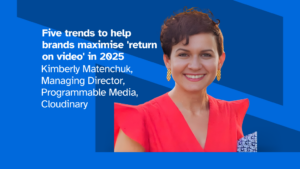By Hilary Stephenson, MD, Nexer Digital
Ensuring workplaces are inclusive and diverse should be standard in the modern age, but unfortunately, that is not always the case. To ensure diversity is more than a checklist item or buzzword, businesses need to embed inclusivity and accessibility into their very fabric.
A diverse workforce is an asset within all industries, but especially in tech and digital. When well-executed, tech and digital can cater to everyone’s needs and enhance life for many, but when work is produced without consideration for those with alternative needs and experiences, life can become very difficult.
Within our own business, a UX design agency, we recognise that we could not possibly hope to meet the diverse needs of our clients and their audiences without having those diverse perspectives within our own team. By having processes in place that encourage diverse hiring, our team is rich with skills, experience and perspectives that can be reflected in our work for clients.
Effectively building a diverse workforce and an environment in which everyone can thrive no matter their background does not simply mean putting vague diversity quotas in place. There needs to be robust processes that ensure the workplace is accessible for everyone and businesses need to go above and beyond to seek out potential talent that may not otherwise consider going for roles in tech businesses.
Exploring alternative career paths
Many businesses, especially within tech and digital, will ask applicants to have a degree as a minimum level of qualification. Figures from HESA show that in the 2019/20 academic year, 74% of university students were white, only 15% were disabled versus 19% in the general population, 81% were either Christian or of no religion and just 12% came from low participation neighbourhoods (POLAR4). This demonstrates that hiring graduates or requesting a degree as a minimum qualification level immediately reduces the pool of diverse talent available.
To overcome this, businesses need to look at hiring from alternative career paths. This may involve taking on apprentices with A-Level or BTEC qualifications, offering training courses for people with no qualifications or working with organisations such as Creative Access to support talented people from groups that are under-represented in terms of ethnicity, socio-economic background or disability.
Diversity and inclusion training
Over recent years, there has been a positive increase in organisations exploring their unconscious bias and diversity awareness, which is excellent to see. Diversity training emphasises the importance of being inclusive and welcoming diversity and all the benefits that it brings. By raising awareness of unconscious biases, this kind of training encourages better interactions and more effective work between colleagues of different abilities, backgrounds or identities.
Diversity and inclusion training combats the risk of discrimination and harassment in the workplace and has the added benefits of improving self-awareness, workplace morale and productivity. By implementing compulsory D&I training, employers will ensure that their workplace is safe for all and will celebrate and nurture diversity within the team.
Make sure the workplace is suitable for all employees
While having a diverse workforce is great, businesses should only actively pursue this once they are sure that everyone can be properly supported by the organisation. This is especially the case when it comes to hiring employees with disabilities. If, for example, your office doesn’t have wheelchair access, you can’t hire a wheelchair user who wants to work from the office.
Ensure that the workplace or working arrangements cater to employee’s needs. Be flexible with hours as someone with chronic fatigue, for example, may not always be able to work during typical office hours. Those who suffer from pain flare-ups may need to take extra time off work. Flexibility and collaboration are key – ask what your employees need and encourage open conversations about how you can make working as comfortable for them as possible rather than making assumptions that may lead to more harm than good.
In the same vein, make sure that employees who need assistive tech – such as screen readers, voice recognition software, visual search engines and text-to-speech facilities, are provided with it when required.
Preparing your business to accommodate a diverse workforce needs to be the first step to truly benefit from the wide and dynamic group of people that your hiring pool will expand to include, and it needs to be carefully considered. Failure to consider will lead to employees feeling unsupported or discrimination issues arising.
Although diversity is a key pillar within our business, there is always room for improvement. The way we do this is by ensuring employees from all backgrounds have their voices heard over what they need to thrive in their roles. As a result of this ongoing commitment, we have a fantastic team who can use their own experiences to ensure that the needs of our clients and their audiences are consistently met, and it would be excellent to see the same level of commitment run through the entire tech and digital sector.









